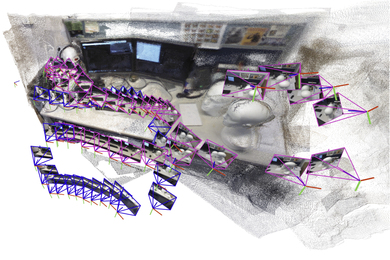It's four centuries old and has been owned by a succession of architects and owners, but the Italian Renaissance drawing on display in the Compton Gallery (Room 10-150) is now a part of MIT's history.
"FRONT + BACK: Investigating a Renaissance Drawing," which will be on exhibit through Dec. 22, combines art and science to explore the history, techniques and stories behind one 16th-century architectural drawing donated to the MIT Museum three years ago.
The exhibit is the culmination of a four-year collaboration between Gary Van Zante, curator of architecture and design at the MIT Museum, and Richard Tuttle, professor of art at Tulane University.
MIT students Svea Heinemann, Sun Na and Jennifer Tran assisted with research for the exhibition. Van Zante wanted architecture students and practitioners embedded in digital practice to learn about architectural representation from a centuries-old, hand-drawn, handmade artifact, and to apply years of research and veneration to a contemporary context.
"This exhibition is contrary to what is usually presented in a museum: It is about one object, not many, and about an object that would not normally be considered beautiful because it is so damaged," Van Zante said. "For museums, especially art museums, it is often a matter of quality. To me, the importance of this drawing was what it could teach us, and the evidence of wear and tear, the stains and repairs, are all part of its story."
The 21-inch-by-34-inch drawing is one of the oldest architectural drawings in the MIT Museum's collection.
A version of this article appeared in MIT Tech Talk on December 13, 2006 (download PDF).






